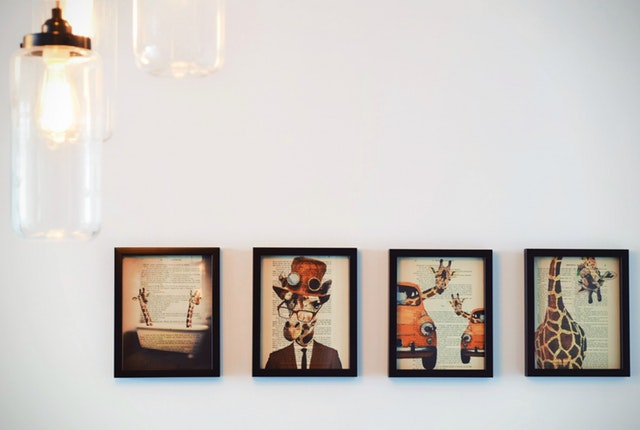Organisations should steer away from viewing corporate art as only an aesthetic option, a trivial thing or an insignificant add-in. Those businesses that completely appreciate the advantages of displaying prints paintings, photos or sculptures in glass showcase within their offices, including the possible positive impact art can have in their work, are equipping themselves with an edge over their competitors.
Present-day trends indicate that art at work is under-provided. According to research by Leesman (2014), Thomas (2010) and the British Council for Offices (2012), researching the operation of workers on the job, up to 95 percent of employees may not find any art out of their desk, 70 percent don’t have any artwork in their office in any respect, and in offices in which artwork is current, 55 percent are discouraged by the choice on display.
This article details four reasons why businesses need to look to solve this and why designers must define more artwork in offices and enhance the overall interior style.
Art creates a statement regarding a Business’ values
An intelligently-curated art set can reflect an organisation’s history and demonstrate its own personality, personality and soul to workers, customers, prospects and partners. In receptions, boardrooms and every other section of their office, a carefully chosen piece of artwork can send a transparent, yet subtle, message to people who view it, expressing and strengthening brand values when appropriate.
Paintings or photos from other areas of the world can show a company’s international reach, whilst exhibiting the work of local artists may demonstrate that a firm supports and adopts the neighbourhood where it functions.
Renting or purchasing artwork through accountable consultancies ensures that emerging artists are compensated fairly for their work, making company’s into Patrons of the Arts.
Art engages staff
Employee participation is getting an increasing number of attention as businesses want to get the absolute most from the work. But, there’s still a significant quantity of effort to be completed within this field; a poll by Gallup at 2014 found 51 percent of employees saying they were not engaged in their occupations, and 17.5% stating that they had been actively disengaged.
Art can provide an extremely effective remedy for this. Offering employees a choice to the artwork they’d like to see inside their office is among the only realistic approach to allow them with a say about the interior design of the office environment and reveal that the direction of an organisation cares about and trusts its employees.
Businesses may also lease art occasionally to refresh change up the space, meaning revived opportunities for employees participation further down the track. Art frequently divides people, where in communal spaces like flexible working places, lounges or break-out zones, art can function as a focal point, get people talking and open up a dialogue which might have otherwise been lacking. The possible impacts on staff morale are undeniably important.

Art affects the all-important bottom-line
A small gain in the productivity of employees can bring enormous financial benefits to an organisation as a whole. Employees thrive in a constructive and optimistic environment, and research indicates that having artwork at work raises creativity, efficiency and maybe even productivity.
In the United States, a survey from the Business Committee for the Arts and the International Association of Professional Art Advisors chose a poll that found 94% considered artwork improved the work environment, also 64% saw improved creativity and productivity.
In the United Kingdom, research by the British Council for Offices in 2013 indicated that 61 percent of employees think art inspires them to work and think more creatively, whilst a study performed independently by ARTIQ together with Zurich Insurance Group indicated that using artwork in the office improved perceived productivity by 14.3 percent compared to that of a control group who had no artwork visible from their own workspace.
On account of the difficulty in quantifying productivity and its sensitivity to external variables it would not be possible to gauge the specific ROI (return on investment) of getting artwork at work, but the most important thing is that in case a small investment attracts even a fraction of a percent gain in the productivity of an organisation as a whole, it is going to have been warranted.
What’s more, the CSR advantages of a business being a Patron of the Arts might be handy series to the bow of any advertising department and also make that company more attractive to prospective clients.
Displaying a stunning artwork collection doesn’t have to be pricey
Many businesses baulk at the notion of art in the office since the term itself conjures up pictures of a hammer coming down along with also an auctioneer declaring “Sold! For ten thousand dollars to the guy in the upper hat”.
However, the truth is, there are thousands of talented artists out there making remarkable work yet to decorate the walls of the Tate Modern, whose job is both accessible and reasonably priced.
Rental is cheaper than buying outright, and includes a host of additional advantages, when artwork is leased via a consultancy for example ARTIQ, employers get assistance with their curation, have setup, upkeep and insurance cared for, and may freshen up the distance every six weeks with new bits or, should they opt to keep the artwork, purchase it outright at the end of the lease period and offset the price against what’s already been paid, basically a ‘try before you buy’. You can also display sculptures in display showcases, not being limited to only wall art.
